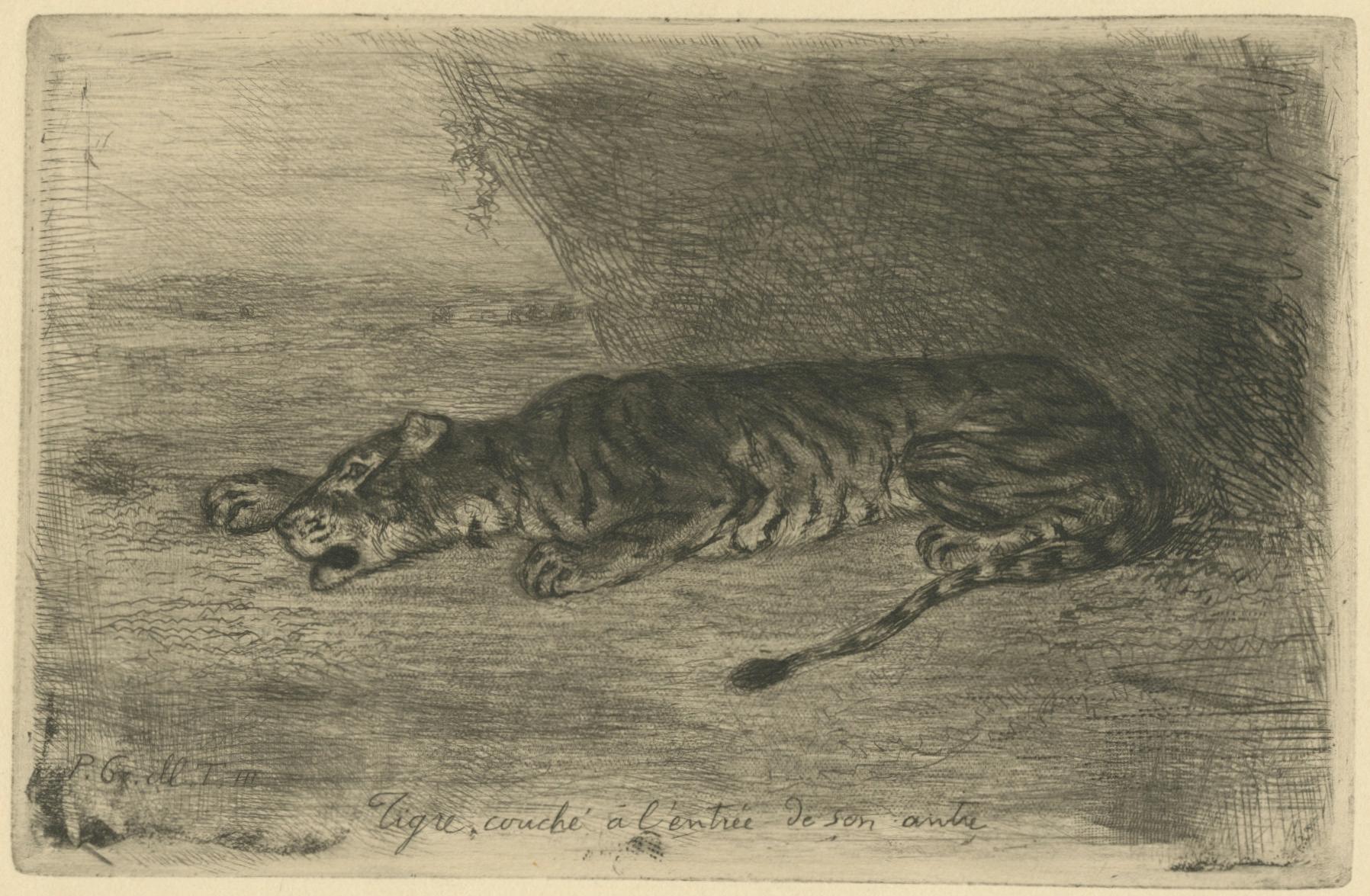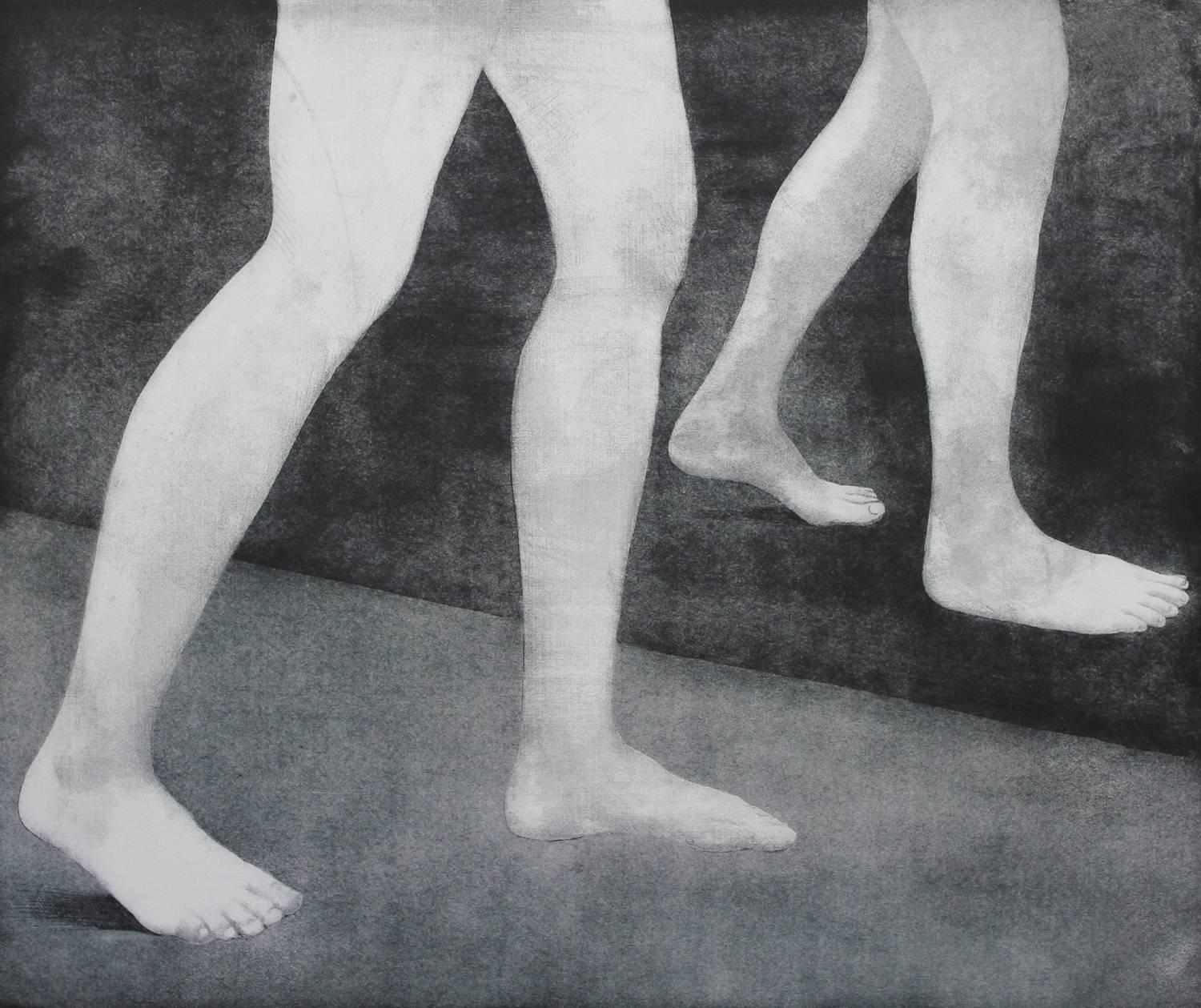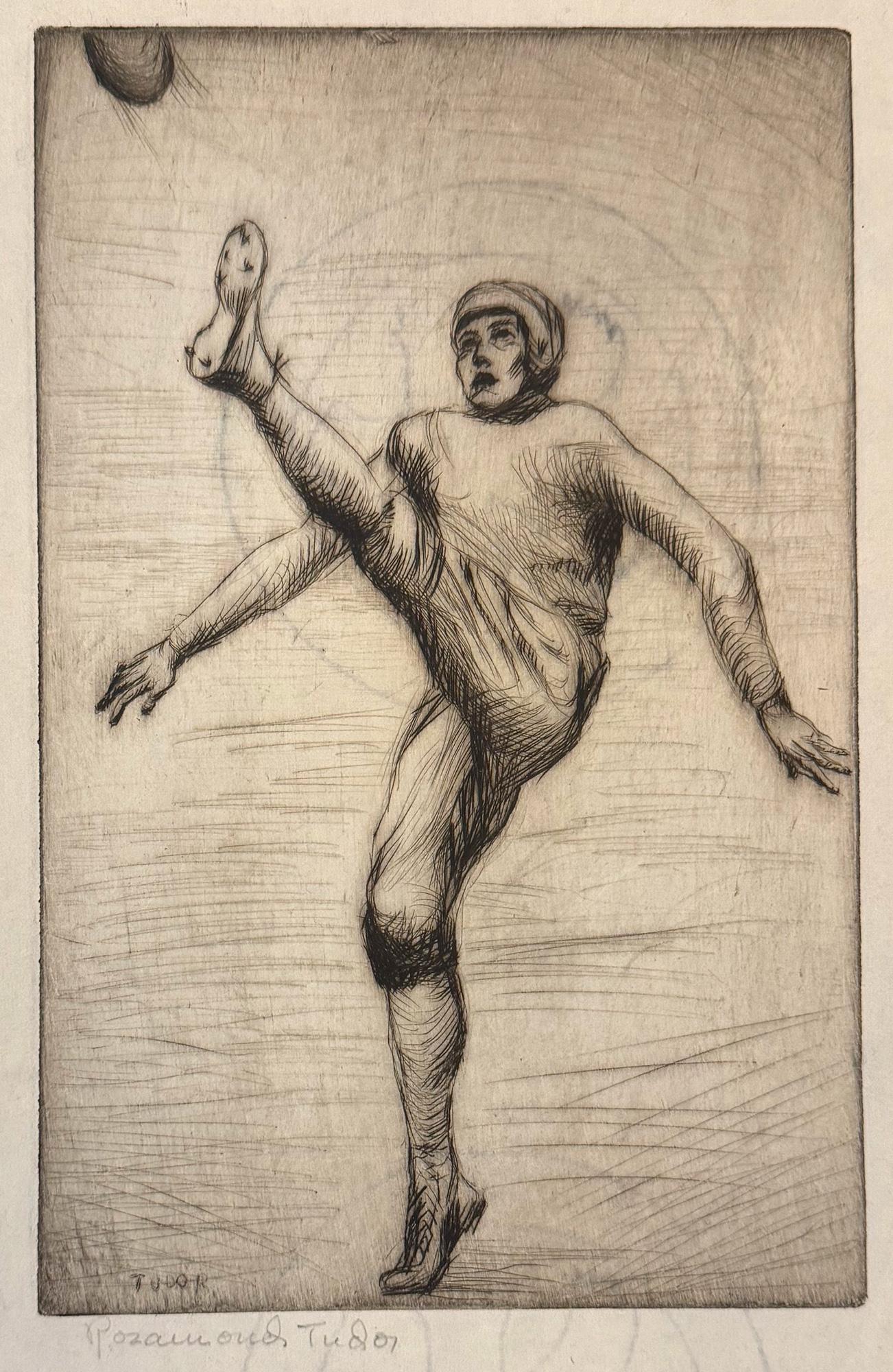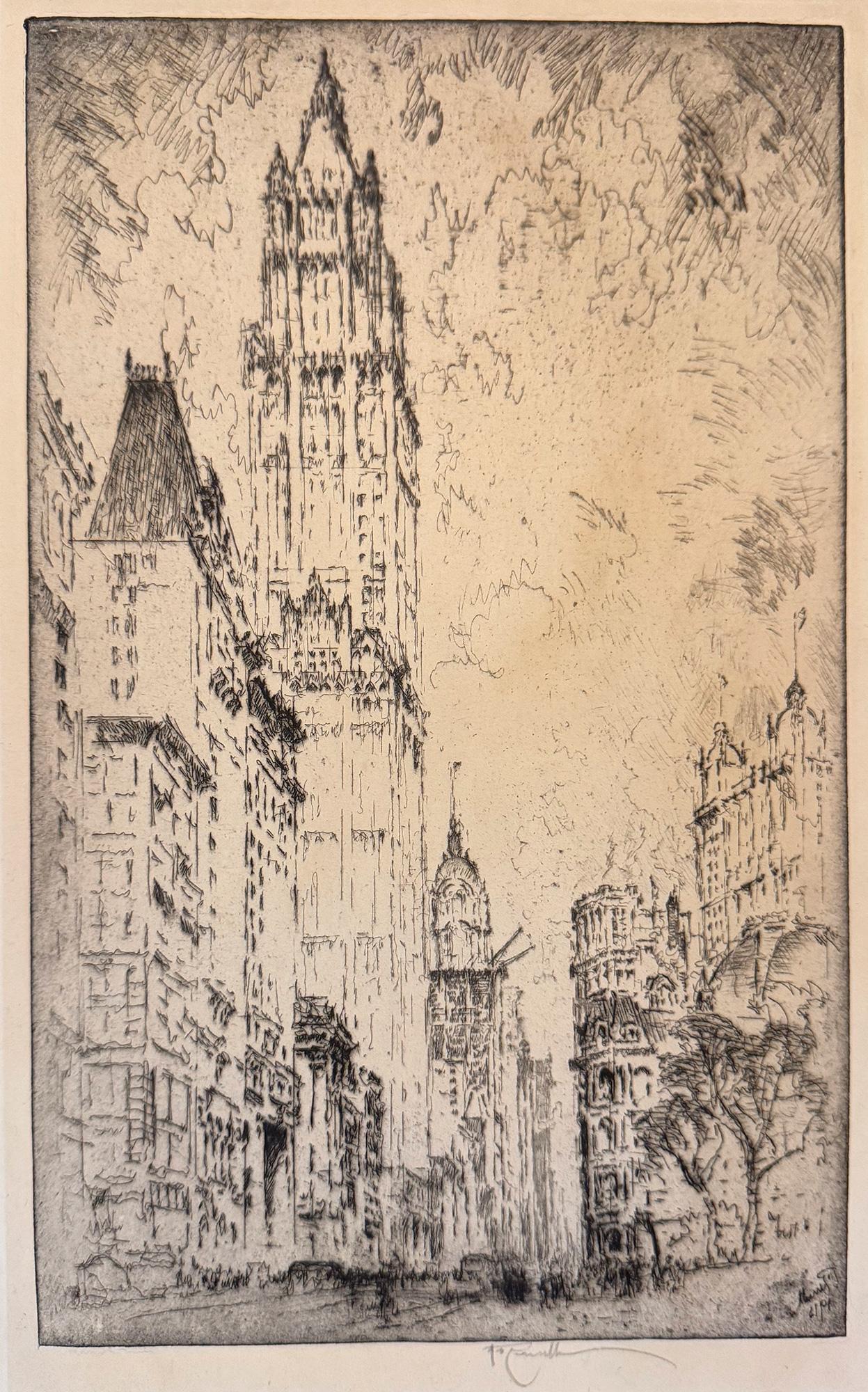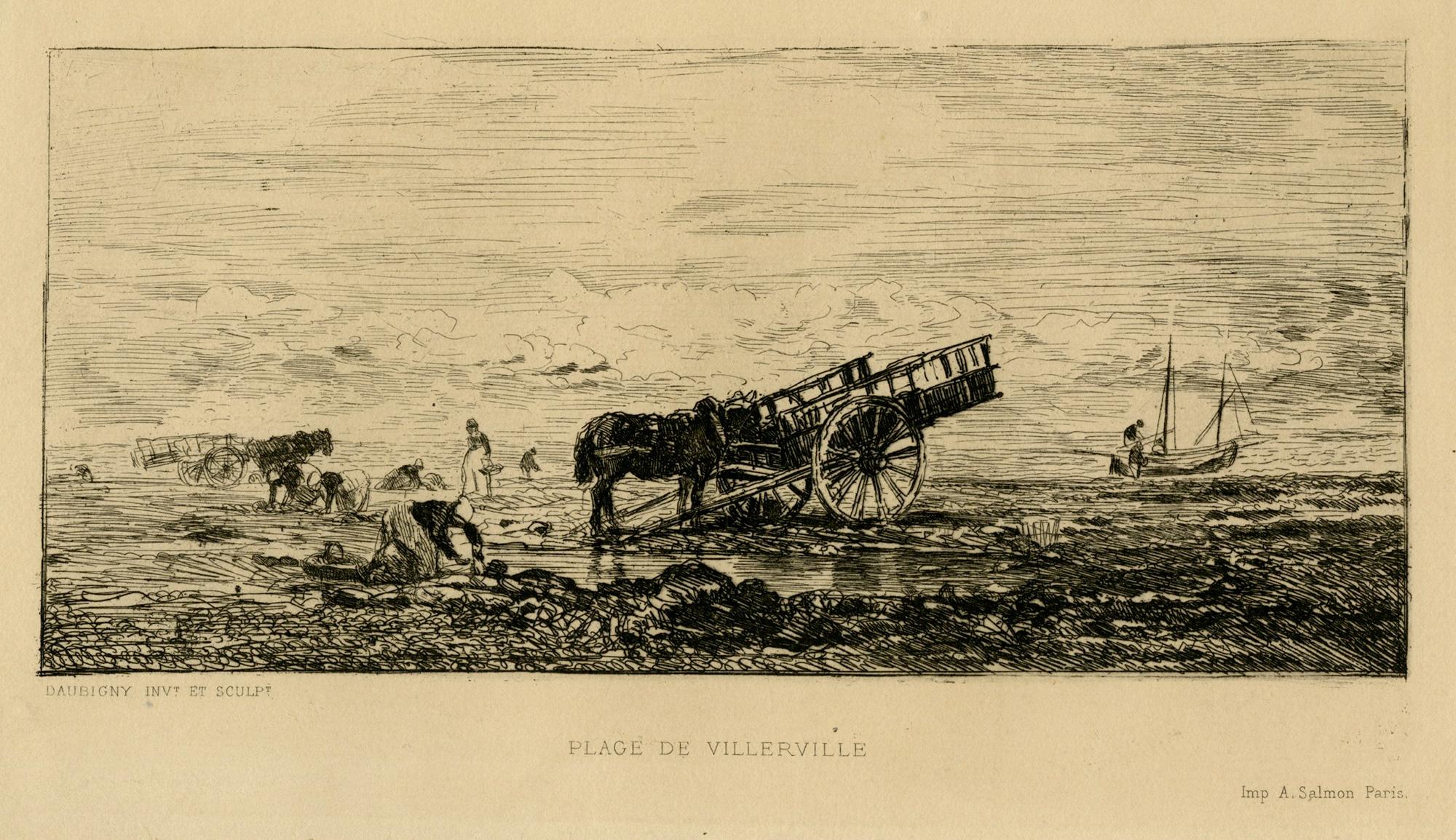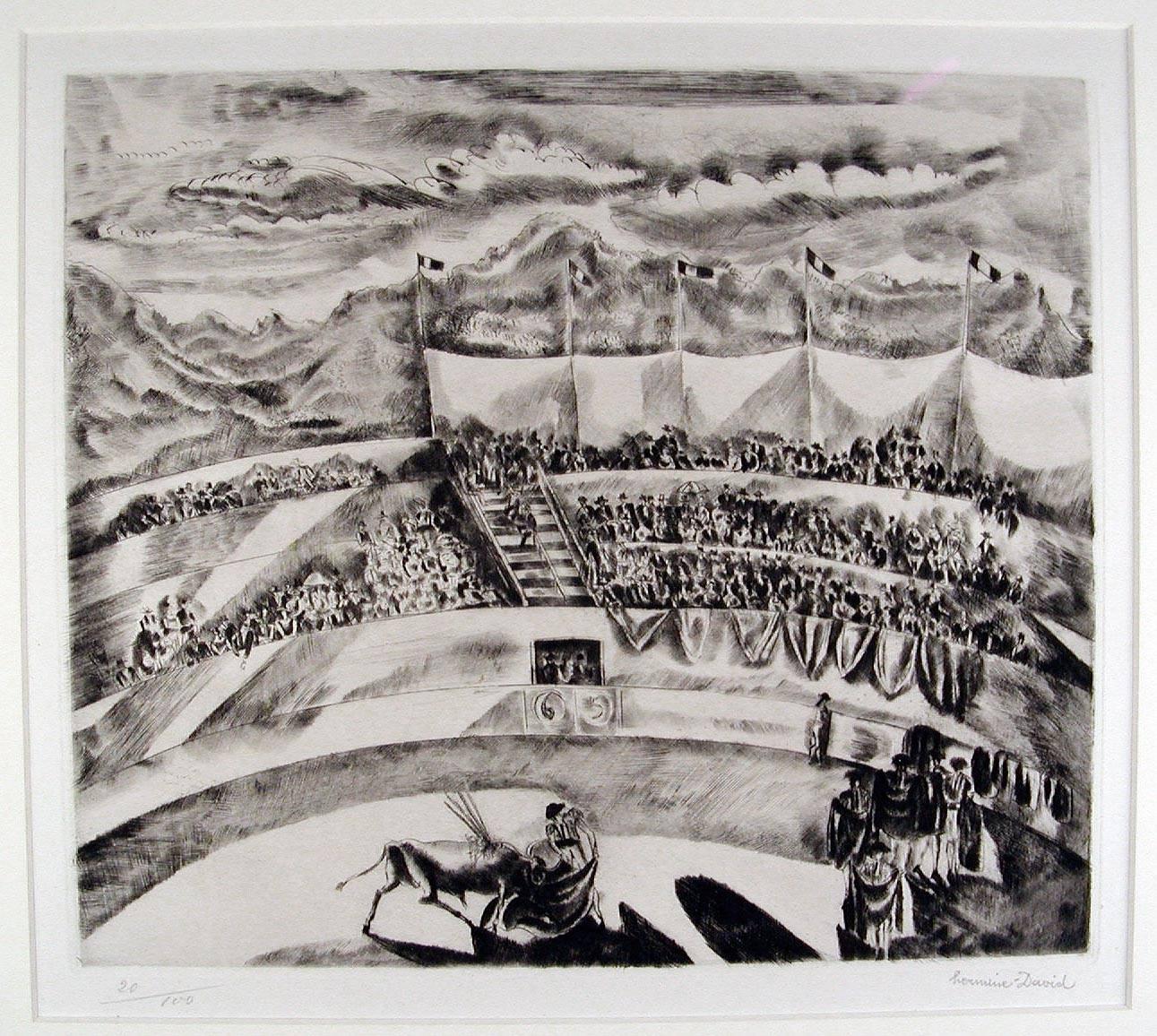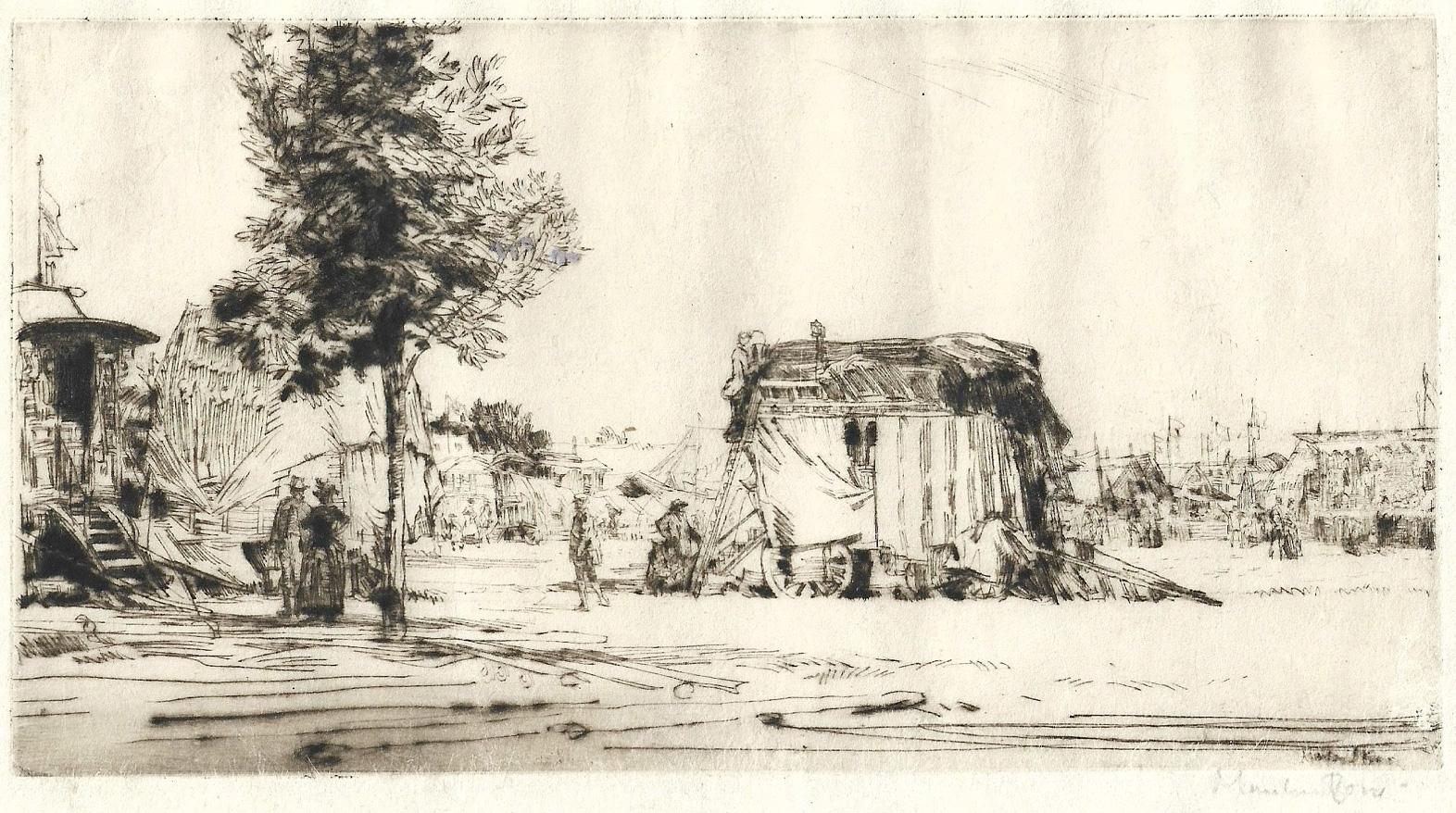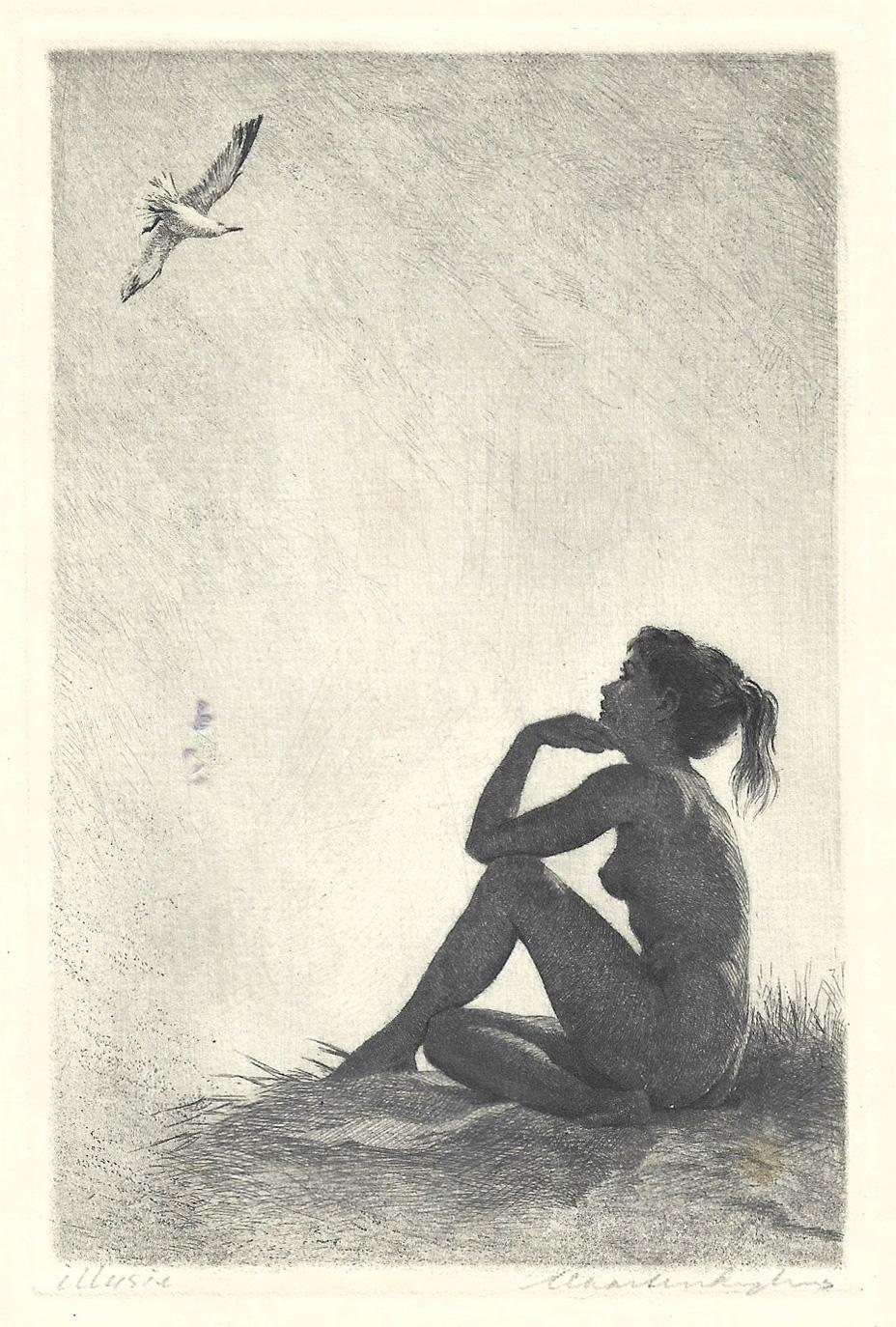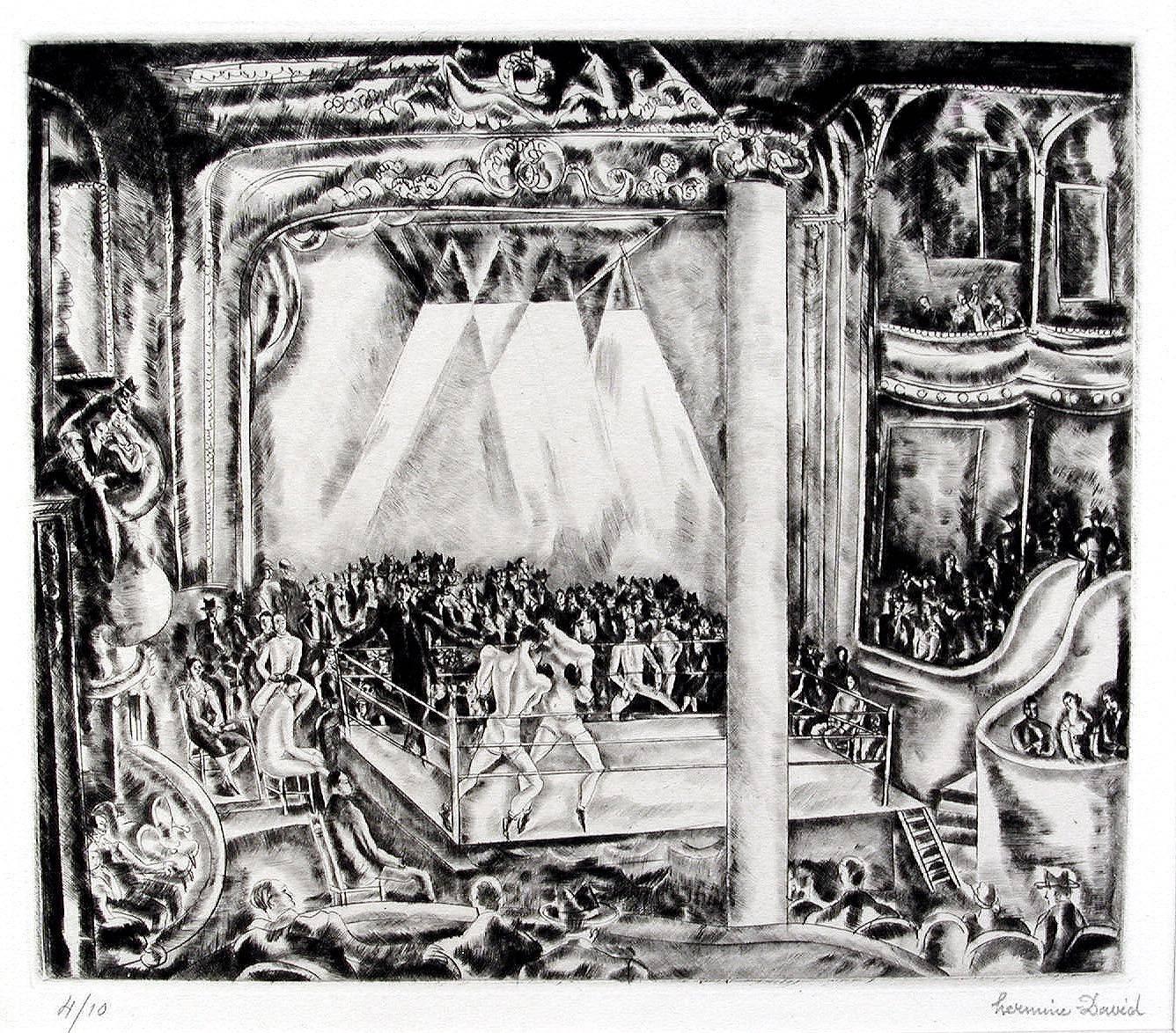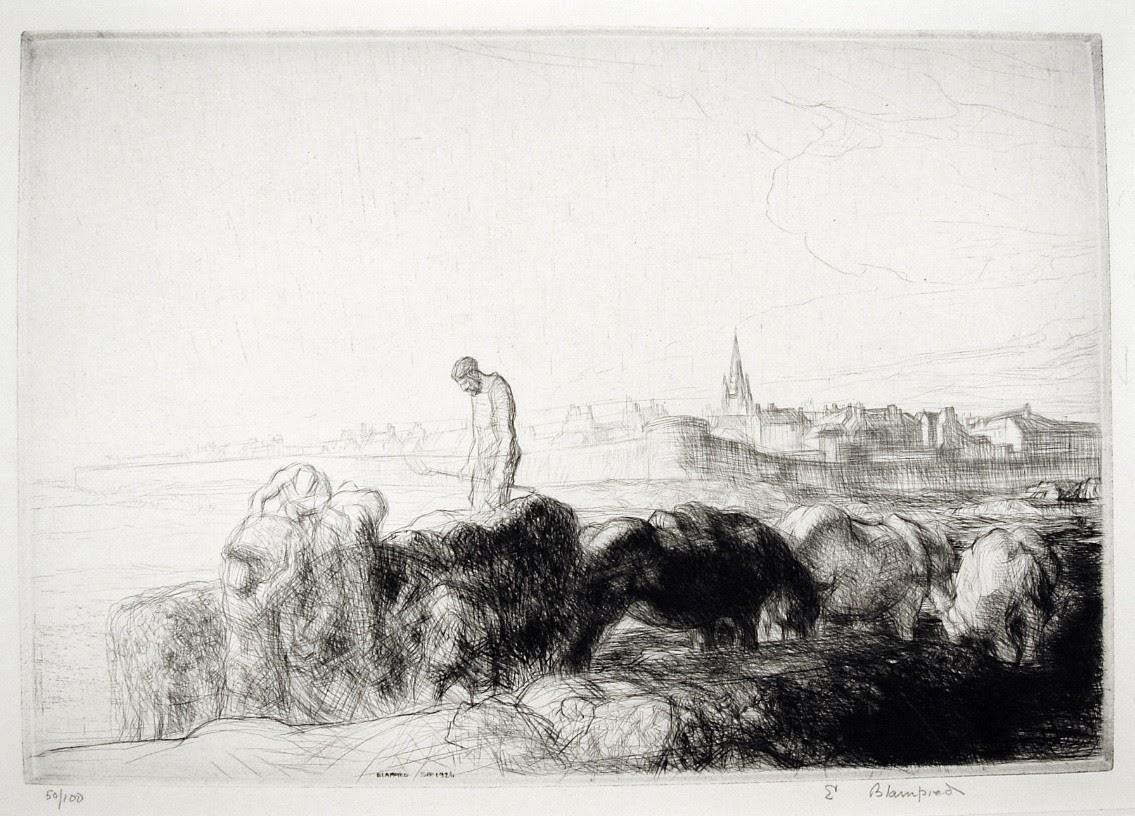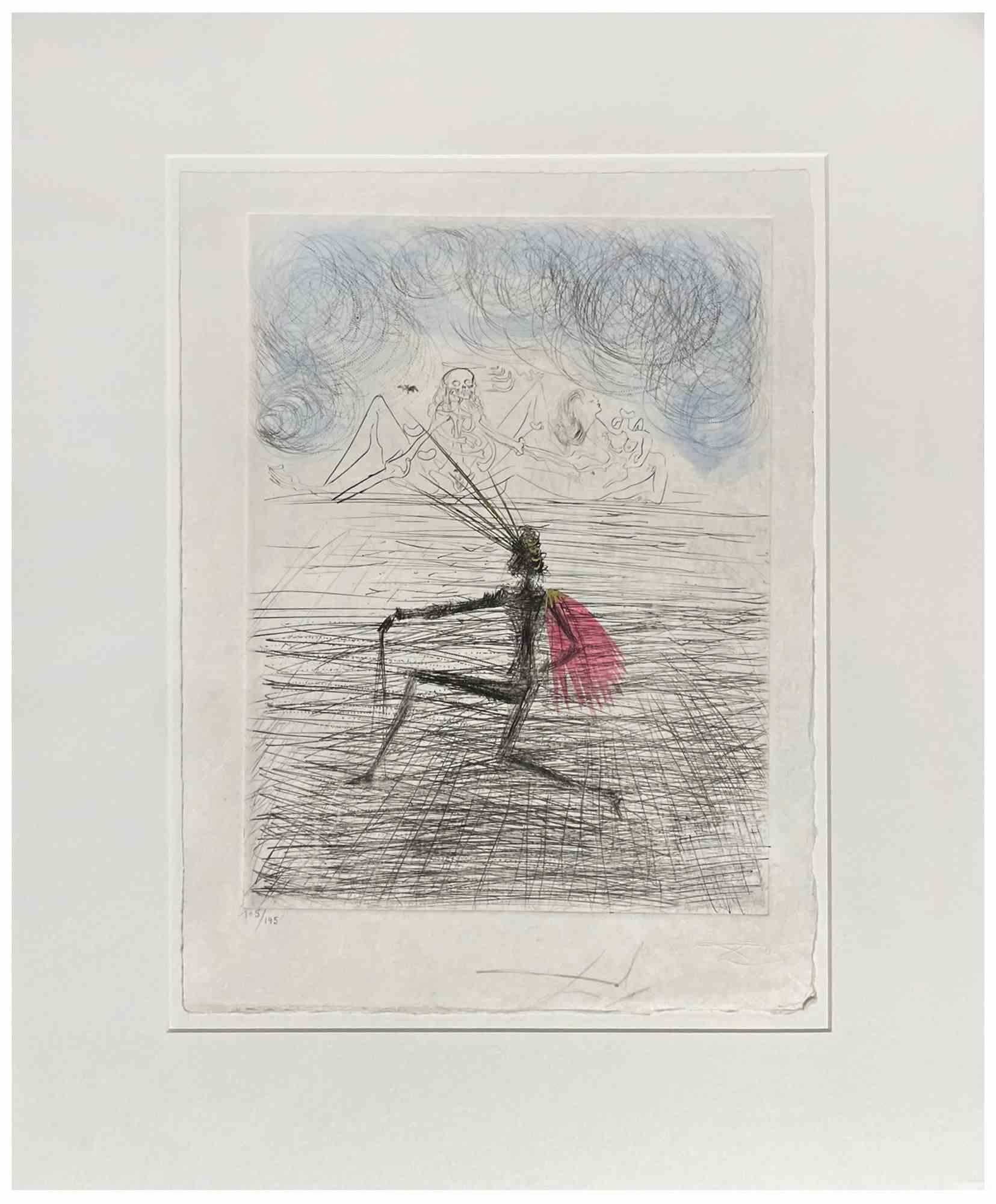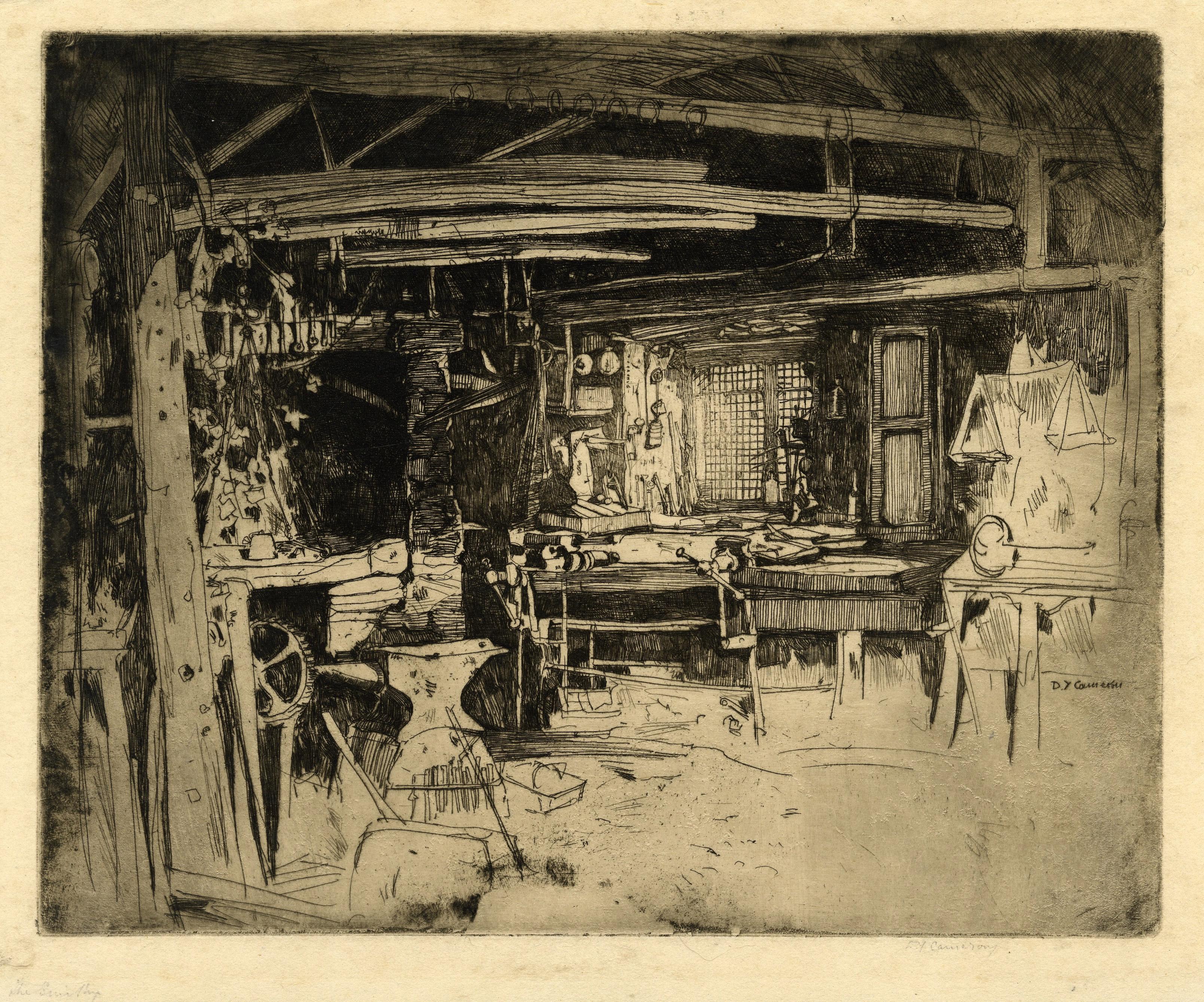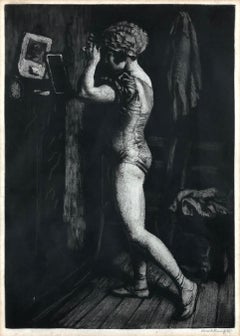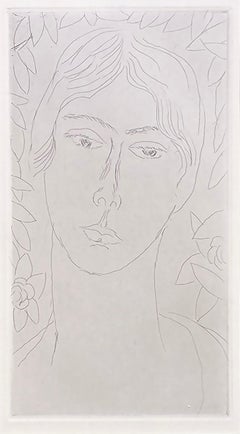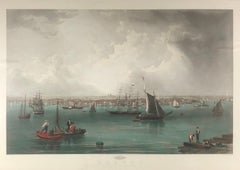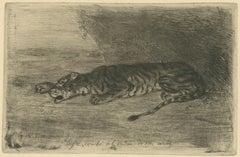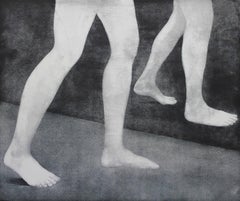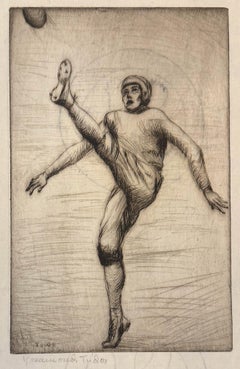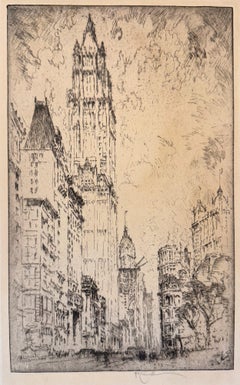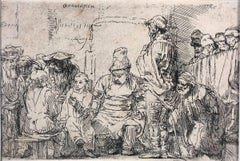
Christ seated disputing with the Doctors
View Similar Items
Want more images or videos?
Request additional images or videos from the seller
1 of 8
Rembrandt van RijnChrist seated disputing with the Doctors1654
1654
$7,000List Price
About the Item
- Creator:Rembrandt van Rijn (1606 - 1669, Dutch)
- Creation Year:1654
- Dimensions:Height: 17 in (43.18 cm)Width: 19 in (48.26 cm)
- Medium:
- Movement & Style:
- Period:1650-1659
- Condition:
- Gallery Location:Missouri, MO
- Reference Number:1stDibs: LU74732674863
Rembrandt van Rijn
Rembrandt was the most influential 17th Century Dutch painter. After years of early success as a portrait painter, his life was beset by financial hardship and personal tragedy. He continued to paint portraits and develop etchings. Rembrandt's portraits of his contemporaries, self-portraits and illustrations of scenes from the Bible are regarded as his greatest creative triumphs. His self-portraits form a unique and intimate autobiography, in which the artist surveyed himself without vanity and with the utmost sincerity. Like many artists of the Dutch Golden Age, such as Jan Vermeer of Delft, Rembrandt was also an avid art collector and dealer. Rembrandt never went abroad, but he was considerably influenced by the work of the Italian masters and Netherlandish artists who had studied in Italy, like Pieter Lastman, the Utrecht Caravaggists, Flemish Baroque, and Peter Paul Rubens. Rembrandt's foremost contribution in the history of printmaking was his transformation of the etching process from a relatively new reproductive technique into a true art form, along with Jacques Callot. His reputation as the greatest etcher in the history of the medium was established in his lifetime and never questioned since. Few of his paintings left the Dutch Republic while he lived, but his prints were circulated throughout Europe, and his wider reputation was initially based on them alone.
About the Seller
5.0
Vetted Professional Seller
Every seller passes strict standards for authenticity and reliability
Established in 1970
1stDibs seller since 2017
155 sales on 1stDibs
Typical response time: 1 to 2 days
Authenticity Guarantee
In the unlikely event there’s an issue with an item’s authenticity, contact us within 1 year for a full refund. DetailsMoney-Back Guarantee
If your item is not as described, is damaged in transit, or does not arrive, contact us within 7 days for a full refund. Details24-Hour Cancellation
You have a 24-hour grace period in which to reconsider your purchase, with no questions asked.Vetted Professional Sellers
Our world-class sellers must adhere to strict standards for service and quality, maintaining the integrity of our listings.Price-Match Guarantee
If you find that a seller listed the same item for a lower price elsewhere, we’ll match it.Trusted Global Delivery
Our best-in-class carrier network provides specialized shipping options worldwide, including custom delivery.More From This Seller
View AllThe Circus Dressing Room
By Dame Laura Knight
Located in Missouri, MO
Dame Laura Knight (1877-1970)
"The Circus Dressing Room" 1925
Aquatint Engraving
Signed in Pencil Lower Right
Image Size: approx 14 x 9 inches
Framed Size: approx. 23.5 x 18.5 inche...
Category
1920s Realist Figurative Prints
Materials
Engraving, Aquatint
Price Upon Request
"Mlle Landsberg" (grade planche, pl. 16)
By Henri Matisse
Located in Missouri, MO
"Mlle Landsberg" (grade planche, pl. 16), 1914
Henri Matisse (French, 1869-1954)
Signed and Numbered Lower Right
Edition 12/15
Image size: 7 7/8 x 4 5/16 inches
Sheet size: 17 11/16 x 12 1/2 inches
With frame: 19 1/2 x 14 1/2 inches
Henri Matisse came from a family who were of Flemish origin and lived near the Belgian border. At eight o'clock on the evening of December 31, 1869, he was born in his grandparents' home in the town of Le Cateau in the cheerless far north of France. His father was a self-made seed merchant who was a mixture of determination and tightly coiled tension.
Henri had no clear idea of what he wanted to do with his life. He was a twenty-year-old law clerk convalescing from appendicitis when he first began to paint, using a box of colors given to him by his mother. Little more than a year later, in 1890, he had abandoned law and was studying art in Paris. The classes consisted of drawing from plaster casts and nude models and of copying paintings in the Louvre. He soon rebelled against the school's conservative atmosphere; he replaced the dark tones of his earliest works with brighter colors that reflected his awareness of Impressionism. Matisse was also a violinist; he took an odd pride in the notion that if his painting eye failed, he could support his family by fiddling on the streets of Paris.
Henri found a girlfriend while studying art, and he fathered a daughter, Marguerite, by her in 1894. In 1898 he married another woman, Amelie Parayre. She adopted the beloved Marguerite; they eventually had two sons, Jean, a sculptor and Pierre who became an eminent art dealer. Relations between Matisse and his wife were often strained. He often dallied with other women, and they finally separated in 1939 over a model who had been hired as a companion for Mme. Matisse. She was Madame Lydia, and after Mme. Matisse left, she remained with Matisse until he died.
Matisse spent the summer of 1905 working with Andre Derain in the small Mediterranean seaport of Collioure. They began using bright and dissonant colors. When they and their colleagues exhibited together, they caused a sensation. The critics and the public considered their paintings to be so crude and so roughly crafted that the group became known as Les Fauves (the wild beasts).
By 1907, Matisse moved on from the concerns of Fauvism and turned his attention to studies of the human figure. He had begun to sculpt a few years earlier. In 1910, when he saw an exhibition of Islamic art, he was fascinated with the multiple patterned areas and adapted the decorative universe of the miniatures to his interiors. As a continuation of his interest in the "exotic", Matisse made extended trips to Morocco in 1912 and 1913.
At the end of 1917, Matisse moved to Nice; he would spend part of each year there for the remainder of his life. A meticulous dandy, he wore a light tweed jacket amd a tie when he painted. He never used a palette, but instead squeezed his colors on to plain white kitchen dishes...
Category
1910s Fauvist Figurative Prints
Materials
Drypoint, Etching
Price Upon Request
The Circus Dressing Room
By Dame Laura Knight
Located in Missouri, MO
Dame Laura Knight
"The Circus Dressing Room" 1925
Etching
Ed. 20
Signed Lower Right
Image Size: approx. 14 x 10 inches
Framed Size: approx. 23.5 x 17.75 inches
An English impressio...
Category
1920s Realist Figurative Prints
Materials
Aquatint
Boston
By John William Hill
Located in Missouri, MO
John William Hill (1812-1879)
"Boston" 1857
Hand-Colored Engraving
Site Size: 29 x 41 inches
Framed Size: 39 x 52 inches
Born in London, England, John William Hill came to America with his family at age 7. His father, John Hill, was a well-known landscape painter, engraver, and aquatintist. John William had a career of two phases, a city topographer-engraver and then, the leading pre-Rafaelite school painter in this country. Employed by the New York Geological Survey and then by Smith Brothers...
Category
1850s Pre-Raphaelite Landscape Prints
Materials
Engraving, Aquatint
Price Upon Request
In the Boudoir
By William Ablett
Located in Missouri, MO
Aquating Engraving
Image Size: Approx 19 x 15.5
Framed Size: Approx. 28.5 x 24.5
William Albert Ablett (1877 - 1937)
Although born to English parents, William Ablett lived in Par...
Category
Early 20th Century Art Deco Figurative Prints
Materials
Engraving, Aquatint
Price Upon Request
Don Juan
By Louis Icart
Located in Missouri, MO
Aquating Engraving
Image Size: approx. 20 1/4 x 13 3/8
Framed Size: 28 x 20.5 inches
Pencil Signed Lower Right
Louis Justin Laurent Icart was born in Toulouse in 1890 and died in Paris in 1950. He lived in New York City in the 1920s, where he became known for his Art-Deco color etchings of glamourous women.
He was first son of Jean and Elisabeth Icart and was officially named Louis Justin Laurent Icart. The use of his initials L.I. would be sufficient in this household. Therefore, from the moment of his birth he was dubbed 'Helli'. The Icart family lived modestly in a small brick home on rue Traversière-de-la-balance, in the culturally rich Southern French city of Toulouse, which was the home of many prominent writers and artists, the most famous being Henri de Toulouse-Lautrec.
Icart entered the l'Ecole Superieure de Commerce de Toulouse in order to continue his studies for a career in business, particularly banking (his father's profession). However, he soon discovered the play writings of Victor Hugo (1802-1885), which were to change the course of his life. Icart borrowed whatever books he could find by Hugo at the Toulouse library, devouring the tales, rich in both romantic imagery and the dilemmas of the human condition. It was through Icart's love of the theater that he developed a taste for all the arts, though the urge to paint was not as yet as strong for him as the urge to act.
It was not until his move to Paris in 1907 that Icart would concentrate on painting, drawing and the production of countless beautiful etchings, which have served (more than the other mediums) to indelibly preserve his name in twentieth century art history.
Art Deco, a term coined at the 1925 Paris Exposition des Arts Decoratifs, had taken its grip on the Paris of the 1920s. By the late 1920s Icart, working for both publications and major fashion and design studios, had become very successful, both artistically and financially. His etchings reached their height of brilliance in this era of Art Deco, and Icart had become the symbol of the epoch. Yet, although Icart has created for us a picture of Paris and New York life in the 1920s and 1930s, he worked in his own style, derived principally from the study of eighteenth-century French masters such as Jean Antoine Watteau, François Boucher and Jean Honoré Fragonard.
In Icart's drawings, one sees the Impressionists Degas...
Category
1920s Art Deco Figurative Prints
Materials
Engraving, Aquatint
$2,800 Sale Price
20% Off
You May Also Like
Tigre couché à l'entrée de son antre (Tiger Lying at the Entrance to its Lair)
By Eugène Delacroix
Located in Middletown, NY
Etching, drypoint, and roulette on watermarked Hallines cream laid paper, 3 3/4 x 5 7/8 inches (95 x 148 mm), full margins. A very good impression of this charming image, with all of...
Category
Early 19th Century Realist Animal Prints
Materials
Laid Paper, Drypoint, Etching
Leap Fail Leap
By Robert Flemming & Mizin Shin
Located in Buffalo, NY
An original mixed media Photo Etching, Aquatint and Drypoint Printed on Arches Cover titled Leap Fail Leap, created by the artistic collaboration of Robert Flemming and Mizin Shin. ...
Category
2010s Realist Figurative Prints
Materials
Paper, Drypoint, Etching, Aquatint
The Punt
By Rosamond Tudor
Located in Middletown, NY
A dynamic football image from the 1920s by a female artist known for her sports scenes.
Etching with drypoint on exceptionally fine laid Japon paper with a double watermark, 10 7/8 ...
Category
Early 20th Century Realist Landscape Prints
Materials
Handmade Paper, Drypoint, Etching
Woolworth Building, New York
By Paul Schumann
Located in Middletown, NY
A rich and tonal image of an icon of Manhattan architecture.
Etching with drypoint, 11 7/8 x 7 3/8 inches (300 x 186 mm), full margins. Edition of 100. Signed in pencil, lower right...
Category
Early 20th Century Realist Landscape Prints
Materials
Handmade Paper, Drypoint, Etching
Plage de Villerville
By Charles François Daubigny
Located in Middletown, NY
Paris: Gazette des Beaux-Arts, 1856.
Drypoint etching on cream laid paper, 4 7/8 x 8 3/8 inches (124 x 245 mm), full margins. In good condition with light uniform age tone. Fourth s...
Category
Mid-19th Century Realist Landscape Prints
Materials
Drypoint, Etching
La Corrida
By Hermine David
Located in New York, NY
Hermine David (1886-1970) La Corrida, etching and drypoint, 1929, signed and numbered (20/100) in pencil (Inventaire Bibliotheque Nationale de France #22)....
Category
1920s Realist Figurative Prints
Materials
Drypoint, Etching
Recently Viewed
View AllMore Ways To Browse
De La Spada
Donald Baechler Rose
Framed Mud Cloth
Heals Of London Armchair
Helena Rubinstein Jewelry
Jim Dine Flowers
Jonah And The Whale
Jonah Whale
Juan Romero
Lon Megargee
Michelangelo Watch
Mucha Documents Decoratifs
Nude Shoes Men
Otto Stark
Pablo Picasso 347 Series
Pennsylvania Tall Chest
Peter Mars
Picasso 347 Series
